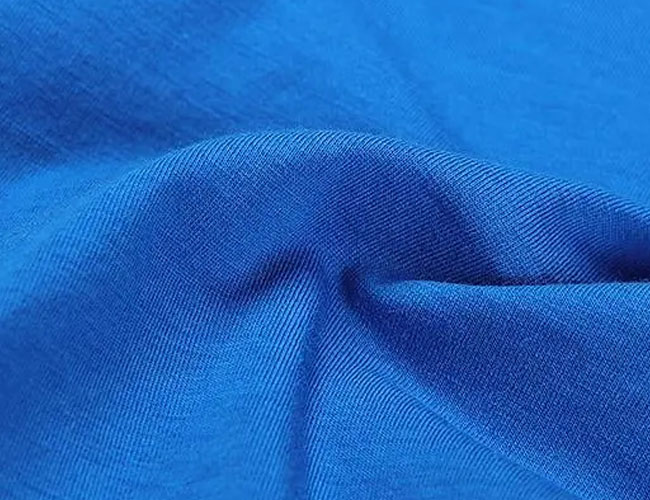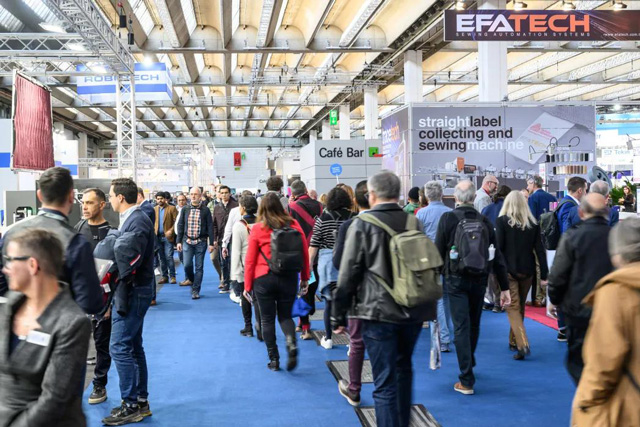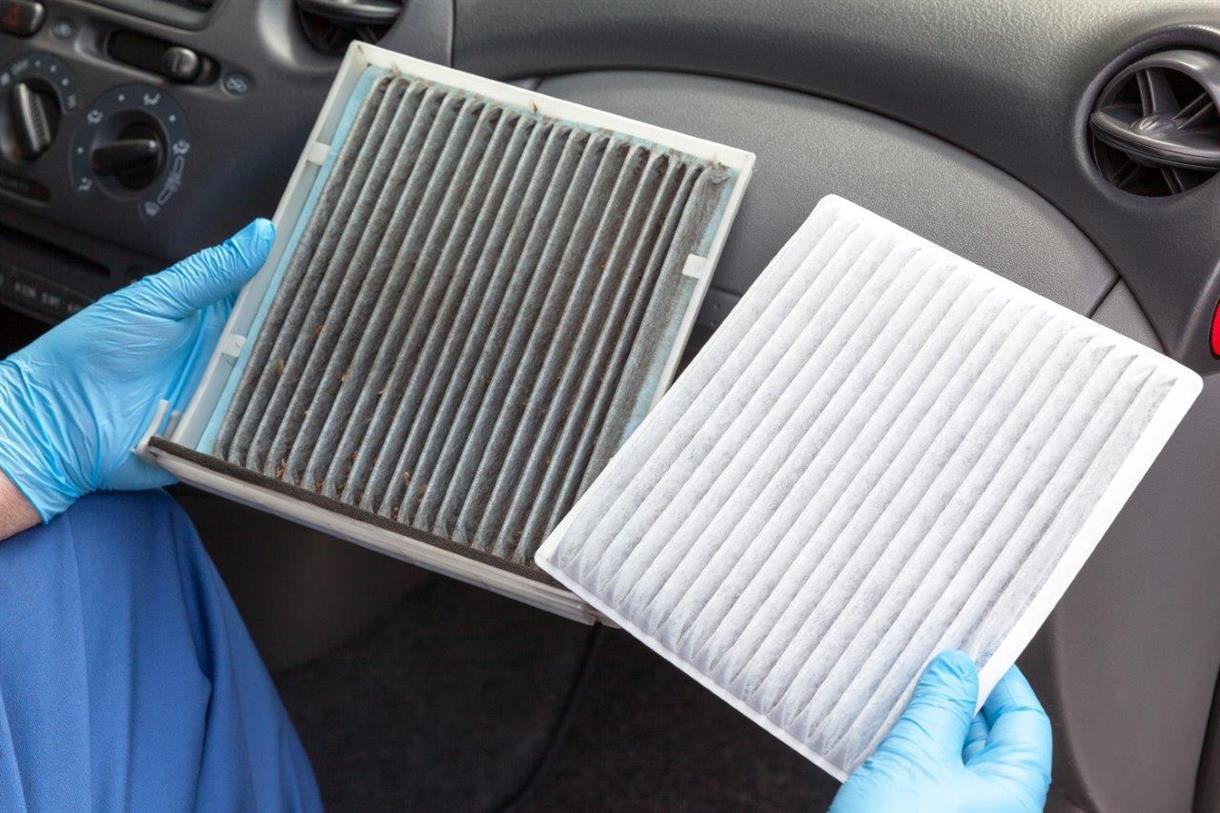
The current fabrics of fabrics are mostly natural and artificial fibers. For example, cotton is a natural fiber, that has good breathability and moisture absorption properties, but the elasticity is poor, and easy to deform. Artificial fiber, as the name suggests, that is, according to the demand for the artificial synthesis of fiber, to solve part of the shortcomings of natural fibers.
Elastane fabric is also called spandex fabric. Elastane fabric is an elastic fiber, i.e., a polyester-like fiber that is a synthetic chemical fiber, with the scientific name of polyurethane fiber. It has high elasticity and can be stretched 6-7 times, but can quickly return to its original state as the tension disappears. Its molecular structure is chain-like, soft, and extendable polyurethane, and its properties are enhanced by connecting it with hard segments. Apparel fabrics are generally mixed with different proportions of elastane to achieve increased elasticity and comfort, and are widely used.
Spandex is an anagram of "expands." Lycra: When DuPont began marketing its elastane product to textile manufacturers, they branded it under the name "Lycra," and this name remains a registered trademark of the DuPont Corporation.
The production process of elastane fabric goes through 3 stages and 6 steps. There are 4 different methods to produce fibers, melt extrusion, reaction spinning, solution dry spinning, and solution wet spinning.
The process starts with the production of prepolymers by mixing macroethylene glycol with diisocyanate monomers. The recommended ratio of macro ethylene glycol to diisocyanate is 1:2.
During dry spinning, the prepolymer is subsequently reacted with an equal amount of diamine, which forms the chain expansion reaction. The resulting solution is diluted with a solvent to produce a spinning solution, which helps to make the solution thinner and easier to handle. This can then be pumped into the fiber production unit.
The spinning solution is pumped into the cylindrical spinning chamber where it is solidified and converted into fibers.
The fibers leave the unit by means of a compressed air unit. Afterward, a precise number of solid strands are bundled together to produce the necessary thickness. Usually, spandex fibers consist of many smaller fibers that stick to each other due to their natural stickiness.
The fibers are treated with magnesium stearate or poly (dimethylsiloxane). The fibers are then transferred to the spool through a series of rolls. The winding speed for the entire process can be 300-500 miles per minute (482.7-804.5 kilometers per minute), depending on the thickness of the fibers.
When the spool is filled with fiber, the final package is secured and shipped to textile manufacturers and other customers.

Elastane can be used in garments that need to be stretchable in order to meet comfort requirements. For example professional sportswear, fitness, and exercise wear, diving suits, swimming suits, competition swimsuits, basketball uniforms, bras and suspenders, ski pants, disco, jeans, casual pants, socks, leggings, diapers, tights, straps, underwear, jumpsuits, elastane bodysuits, straps for male ballerinas, protective clothing for surgery, protective clothing for logistic troops, short sleeves for cycling, undershirts for wrestling Rowing suit, underwear, performance costumes, qualitative clothing, etc. Such as bras, home decorations, and micro-bead pillows.
Elastane is used in a relatively small percentage of general clothing. In North America, it is rarely used in men's clothing, but more often in women's clothing. This is because women's clothes require a more snug fit. In the use of all will be a large number of other fibers such as cotton, polyester blend, in order to reduce the sheen to a limited.
1. The elasticity of elastane is very high, generally, the product does not use 100% polyurethane, 5~30% more mixed in the fabric, all kinds of elastane fabrics have 15%~45% comfortable elasticity.
2. Elastane fabric has good adaptability to the body, very suitable for tight-fitting clothes, with no pressure.
3. The appearance style and wearing performance of elastane stretch fabric is close to the similar products of the outer fiber fabric covered.
4. Split, refractive, thick and thin, elastic and tough.
5. Elastic fiber in the fresh state appears yellow, so it is also called yellow fiber. Elastic fibers are more slender, straight line ends tend to curl, elasticity is better, but poor toughness, can be dyed by aldehyde compound red or lichen red and other stains appear purple or tan.
1. Poor moisture absorption and small range of moisture absorption.
2. Elastane is usually blended with other fabrics, rather than used alone, this fiber has both rubber and fiber characteristics, mostly used for core yarn with elastane as the core yarn.
3. Heat resistance is poor, heat resistance varies by species, most fibers are stored in the range of 90 to 150 ℃ for a short time, the fiber will not be damaged. If the safe ironing temperature is lower than 150, it will interfere with heating and wet cleaning.
4. Not resistant to oxides, easy to make the fiber yellow and reduce the strength.
Elastane as a high elasticity fiber in cotton, wool, silk and synthetic fibers and other kinds of fabrics and garments are more and more commonly used. Elastane is basically not spun into fabrics alone, so the classification of elastane fabrics can be understood as the classification of fabrics containing elastane components, so we can divide the taking fabrics into three categories according to the elasticity size according to different wearing requirements:
1. High-stretch elastane fabric;
2. Medium stretch elastane fabric;
3. Low-stretch elastane fabric;
Generally speaking, 20% to 30% of the elastic elongation has been able to meet the requirements of people for wearing comfortably.
From the process of elastic fabric development, the use of elastane is gradually from knitted fabrics to woven fabrics, from underwear to outerwear, from garter class to fabrics, from women's products and sports goods to the direction of a variety of uses of textiles.
Polyester and elastane are better than polyester.
Compared with strength: polyester fabric is better, polyester staple fiber strength is 2.6~5.7cN/dtex, high strength fiber strength is 5.6~8.0cN/dtex, mainly used as rope, fishing line, crane rope and other high strength requirements of tools; compared with elastane fabric strength is very poor.
In addition, elastane and polyester compared to polyester is the cheapest, and elastane fabric prices are higher.
All Rights Reserved: https://www.groupgf.com/info-detail/elastane-fabric
Copyright Notice: This is an original (translated) article from G&F Group Inc., please indicate the source from G&F GROUP INC... If there is any infringement, please contact us first.
 Nonwoven in daily life ----- medical and healthcare
Nonwoven in daily life ----- medical and healthcare
 Techtextil & Texprocess Rounded Off
Techtextil & Texprocess Rounded Off
 Nonwovens in daily life ----- filtration
Nonwovens in daily life ----- filtration
 Nonwovens in daily life ----- automotive
Nonwovens in daily life ----- automotive